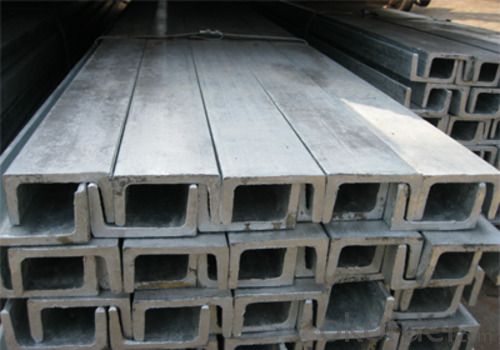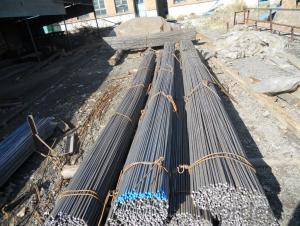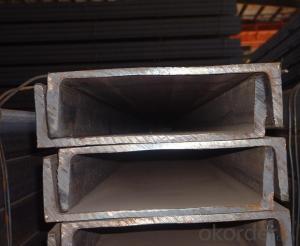Channel Bar Hot Rolled Zinc Coated from Tianjin
- Loading Port:
- Tianjin
- Payment Terms:
- TT OR LC
- Min Order Qty:
- 35 m.t.
- Supply Capability:
- 40000 m.t./month
OKorder Service Pledge
OKorder Financial Service
You Might Also Like
Specifications
1)U-Channel Steel
2)high quality Channel Steel
Hot Dipped Galvanized Channel Bar
1)Material: Q235,A36,SS400
2)Size:75*40-1
1.Height:80-300mm
2.Thickness 1.2 -3.0mm
2.Material:Q235/Q195/Q345
3.Surface: Galvanized.
4.Standard:JIS/ASTM/DIN
5.Specification:C80*40*15 C100*45*15-C200*40*43-C400*50*15
6.Zinc coat: 275g/m2.
7.Packing:2-3t/pvc bag steel pallet or according to the customers` requirments
8.MOQ: 20ton
9.Delivery time: 15 days
10.Payment: T/T(30% advance), L/C at sight
Our company specializes in manufacturing profile steel products such as H beams,I beams,Channel steel,Angle steel , and also can find some best quality steel plate,steel pipe ,steel coils,tinplate and many kinds of steel products of this kind.Through past decades hard working,we have been well known in China ,we set up the international trade department this year and try our best to have a good beginning,We wish to enter into business relations with you by the commencement of some practical transactions
Should you find interest in our items,kindly let us know.We shall be pleased to give you our lowest quotations upon receipt of your detailed requirements.
We look forward to receiving from you specific enquiries,also welcome you visit our company at anytime.



- Q: Can steel channels be used for creating staircases or handrails?
- Yes, steel channels can be used for creating staircases or handrails. Steel channels are versatile and strong, making them an ideal choice for constructing staircases and handrails. They provide structural support and stability, ensuring the safety of individuals using the stairs or handrails. Steel channels can be easily fabricated and customized to fit specific design requirements, making them suitable for various architectural styles. Additionally, steel channels are durable and resistant to wear and tear, making them a long-lasting option for staircases and handrails.
- Q: Can steel channels be used in high-temperature environments?
- Yes, steel channels can be used in high-temperature environments. Steel has excellent heat resistance properties and can withstand high temperatures without losing its structural integrity. However, the specific type of steel used and its alloy composition should be carefully selected to ensure optimal performance and prevent any potential issues such as corrosion or deformation.
- Q: What are the different surface treatment processes for steel channels?
- There are several different surface treatment processes for steel channels, including hot-dip galvanizing, powder coating, electroplating, and painting. These processes help to improve the corrosion resistance, durability, and aesthetics of the steel channels.
- Q: 28a difference between channel steel and 28b channel steel
- 50 * 37 * 4.5 5 5.44 #63 * 40 * 4.8 6.3 6.635 #65 * 40 * 4.8 6.5 6.7 #80 * 43 * 5 8 8.045 #100 * 48 * 5.3 10 10.007 #120 * 53 * 5.5 12 12.06 #
- Q: What is the wall thickness of national standard 8* channel steel?
- Should refer to the GB 8 channel height 80 leg width 43 waist thickness 5.Channel steel is a strip of steel with a cross section. Section steel with groove shape.Channel steel is divided into ordinary channel steel and light channel steel. Standard Specification for hot-rolled plain channel steel is 5-40#. Specifications for hot rolled flexible channel steel supplied by supply and demand agreement are 6.5-30#. Channel steel is mainly used for building structures, vehicle manufacturing, other industrial structures and fixed plates, cabinets, etc., and channel steel is often used in conjunction with i-beam.According to the channel shape and can be divided into 4 kinds: cold bending equilateral channels, cold-formed non equilateral channel steel, cold rolled edge channels, the cold bending edge channelsAccording to the theory of steel structure, it should be stressed by the channel plate, that is to say, the channel should stand rather than lie prone.
- Q: What are the tolerances for steel channels?
- The tolerances for steel channels can vary depending on a few factors such as the specific type of channel, the manufacturing process, and the desired application. However, generally speaking, the tolerances for steel channels are typically specified in terms of dimensions such as width, depth, and length. For example, the tolerances for the width and depth of steel channels may range from +/- 0.005 inches to +/- 0.030 inches, depending on the size and grade of the channel. Similarly, the length tolerances can range from +/- 1/8 inch to +/- 1/4 inch, again depending on the specific requirements. It is important to note that these tolerances are usually established by industry standards or customer specifications, and they are intended to ensure that the steel channels meet the desired dimensional requirements for a particular application. These tolerances allow for slight variations in the dimensions of the channels without compromising their functionality or structural integrity. In addition to dimensional tolerances, other tolerances may also be specified for factors such as straightness, twist, and surface finish. These tolerances help ensure that the steel channels meet the required quality standards and can be effectively used in various applications such as construction, manufacturing, and structural engineering. Ultimately, it is crucial to consult the relevant standards or specifications for the specific type of steel channel being used to determine the precise tolerances that need to be met.
- Q: How are steel channels used in the construction of stadiums or arenas?
- Steel channels are commonly used in the construction of stadiums or arenas to provide structural support and reinforcement. They are often used to create the framework for seating areas, staircases, walkways, and other elevated structures. Steel channels help distribute the weight and load of the structure, ensuring its stability and durability. They also allow for flexibility in design, as they can be easily customized and assembled to fit the specific requirements of the project.
- Q: Can steel channels be used for solar panel mounting systems?
- Yes, steel channels can be used for solar panel mounting systems. Steel channels provide a strong and durable structure that can support the weight of solar panels. They can be easily customized and offer flexibility in design, making them a popular choice for solar panel installations.
- Q: Are steel channels suitable for load-bearing applications?
- Indeed, load-bearing applications can benefit from the use of steel channels. These channels are specifically engineered to offer structural support and are frequently employed in construction and engineering endeavors. Their exceptional strength and durability render them well-suited for enduring substantial loads and efficiently distributing weight. Beams, columns, frames, and supports are just a few examples of the diverse range of load-bearing applications in which steel channels can be employed. Furthermore, their versatility enables easy customization to meet specific load prerequisites. All things considered, steel channels are a dependable and widely favored option for load-bearing applications, owing to their strength, durability, and adaptability.
- Q: Are steel channels suitable for use in the construction of rooftop structures?
- Yes, steel channels are suitable for use in the construction of rooftop structures. Steel channels are known for their strength and durability, making them an excellent choice for supporting the weight of rooftop structures. They can withstand heavy loads and provide stability and structural integrity to the construction. Steel channels are also resistant to weather elements, such as rain, wind, and snow, which are common on rooftops. Moreover, steel channels can be easily fabricated and installed, making them a cost-effective and efficient option for rooftop construction. Overall, steel channels offer numerous advantages, making them a suitable choice for use in the construction of rooftop structures.
Send your message to us
Channel Bar Hot Rolled Zinc Coated from Tianjin
- Loading Port:
- Tianjin
- Payment Terms:
- TT OR LC
- Min Order Qty:
- 35 m.t.
- Supply Capability:
- 40000 m.t./month
OKorder Service Pledge
OKorder Financial Service
Similar products
Hot products
Hot Searches
Related keywords




























